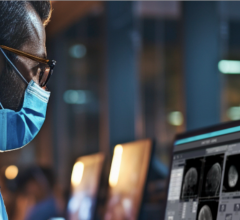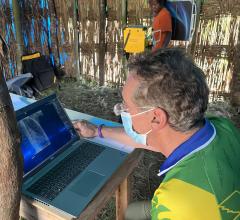The U.S. House of Representatives July 10 passed its version of the 21st Century Cures Act (H.R. 6), designed to improve the U.S. healthcare innovation infrastructure. It was approved in a bipartisan vote of 344-77. The bill calls for providing resources to researchers working on next-generation medical devices and therapies. The legislation is aimed at addressing concerns that U.S. healthcare innovation is lagging behind the rest of the world due to large amounts of time-consuming and expensive regulatory oversight requirements that some feel are stifling innovation and the ability of startup companies to bring new products to market.
The Senate is not expected to take up the 21st Century Cures initiative until the end of the year.
The bill acknowledges healthcare innovation today is happening at lightning speed. From the mapping of the human genome to the rise of personalized medicines that are linked to advances in molecular medicine, there is a constant stream of breakthroughs that are changing the face of disease treatment, management and cures. Health research is moving quickly, but the federal drug and device approval apparatus is viewed by many in the industry as outdated and unable to keep up with the pace of change in medicine.
The bill calls for $550 million in mandatory funding for the U.S. Food and Drug Administration (FDA), as well as an additional $10 billion in funding for the National Institutes of Health (NIH). Of this, $1.86 billion in funding annually for 2016 through 2020 would be earmarked for an NIH Cures Innovation Fund, dedicated to research of new innovations. The money will be allocated as research grants to biomedical research that shows the most promise and is likely to have a big return on investment if the technology works. The bill also required the NIH to implement measures to reduce the administrative burdens for researchers funded by the NIH.
"Today's passage of HR 6, the 21st Century Cures Act, demonstrates the House's commitment to working together in a bipartisan manner to improve healthcare in the United States. The increased mandatory funding for the NIH drives home the importance of innovation and medical research in the healthcare community's efforts to improve patient outcomes through new treatments," said American College of Cardiology President Kim Allan Williams Sr., M.D., FACC. "The United States has long been a leader in medical research that has advanced patient care throughout the world. Our healthcare system - and more importantly our patients - can't afford for us to become stagnant. This legislation helps address that need. We thank Chairman Upton, Congresswoman DeGette, and their colleagues who spearheaded and advanced this praiseworthy effort."
Incentives for Radiology
The bill includes a provision to repeal radiology's much-reviled 25 percent professional component multiple procedure payment reduction (PC MPPR). The American College of Radiology (ACR) and its members have long advocated for a repeal of this policy. The provision repealing the MPPR was attached to an industry-sponsored payment differential policy whose purpose is to encourage the migration from analog film to digital X-ray technology.
This portion of the legislation offers incentive payments for use of new digital radiography (DR) X-ray technology. This includes a provision to reduce payments by 20 percent for imaging services that use film starting in 2017. It also calls for a phased-in 7 percent reimbursement reduction for imaging facilities using computed radiography (CR) X-ray systems starting in 2023.
Proposed Changes
Part of the legislation calls for the Department of Health and Human Services (HHS) to revise how clinical trials are currently conducted, including broader application of Bayesian statistics and adaptive trial designs. The changes would also include use of clinical evidence beyond just randomized clinical trial data, including data from observational studies, registries, therapeutic use, evidence described in well-documented case histories, studies published in peer-reviewed journals, and data collected in countries outside the United States.
Another section of the bill calls for streamlining clinical trials in several ways. These proposed measures include avoiding regulatory duplication and unnecessary delays, modernizing provisions in the context of multisite and cooperative research projects, and to incorporate local considerations, community values and mechanisms to protect vulnerable populations.
With promising drug candidates or breakthrough devices, HHS may request an accelerated review by the FDA. This might include use of surrogate endpoints to help speed trials testing safety and efficacy in humans.
Congress also noted in the bill that the FDA review process needs to be streamlined. This includes the ability to make approval decisions based on qualified data summaries. One section calls for the easing of regulatory burdens for approval of certain Class I and Class II medical devices.
To enable faster safety assessments of device design changes, HHS would be authorized to use third-party quality assessors who are accredited to conduct such inspections. HHS would rely on such certifications for purposes of determining the safety and effectiveness (or as applicable, substantial equivalence) of in-scope devices subject to the device-related changes involved in a premarket notification, 30-day notice or a special PMA supplement.
For physicians involved in device trials who can speak as an authority about the use of a new device or drug at medical meetings or continuing education events, the bill would lift some of the monetary restrictions currently imposed regarding physician/vendor payments. The bill would allow these speakers to be reimbursed by vendors for their expenses to attend these events, provided the content of the presentations were vendor-neutral.
Numerous technology advances now enable easy delivery of telemedicine to replace traditional in-office patient visits, which could enable a large cost and time saving for both patients and providers. Congress acknowledged this and included provisions in the bill to expand these types of programs and Medicare payments for them provided the programs deliver the same, or better, level of care as in office visits.
Congress acknowledged in the bill that the development of new drugs has become increasingly challenging and resource-intensive. To address this, the bill calls for the creation of drug development tools and more collaboration between researchers. HHS is called on to enable the availability of new medical therapies by helping to translate scientific discoveries into clinical applications.
HHS is to develop guidance on the evidence needed to support the use of biomarkers that identify subsets of patients as likely responders to therapies in order to streamline the conduct of clinical trials for these agents.
A subsection of the bill calls for expediting patient access to new drugs and devices and allowing expanded access to investigational drugs.
There have been a large number of new therapies that combine multiple products, as in the case of drug-eluting stents that combine an antiproliferative drug and a stent device and require a delivery catheter system. The bill includes a section calling for enhancement of the review process for these types of combined products.
Another section of the bill makes accessing protected patient information easier for medical research purposes, including remote electronic access.
HHS and the Centers for Disease Control (CDC) are supposed to develop a plan to enhance and expand infrastructure and activities to track the epidemiology of neurological diseases, including multiple sclerosis and Parkinson's disease. Data collected from this research is to be compiled from open collaboration in an integrated surveillance system to be known as the National Neurological Diseases Surveillance System.
More than 250 nonprofit organizations representing patients, family caregivers, healthcare providers and researchers joined with the National Health Council in signing a letter of support for the bill in late June. "This bill is based on the hard work and thoughtful recommendations of the entire health community," the letter stated. "This is a patient-focused bill that will advance the discovery and development of treatments, strengthen the patient voice in the regulatory environment, increase funding for the National Institutes of Health and Food and Drug Administration, and greatly improve our innovation ecosystem."



 April 17, 2024
April 17, 2024 








